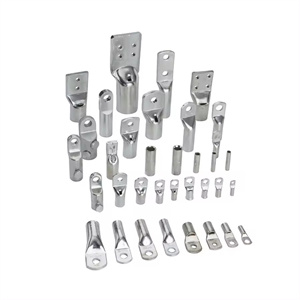Terminal connectors rarely use blackening treatment. This is mainly because blackening treatment is mainly used to improve the corrosion resistance, wear resistance, and decorative properties of metals, but for terminal connectors, their primary function is to ensure the stability and reliability of electrical connections.
Terminal connectors typically use other surface treatment processes that are more suitable for their working environment and performance requirements during design and manufacturing, such as tin plating, silver plating, or nickel plating. These processing techniques can improve the conductivity of terminal connectors, reduce contact resistance, prevent oxidation and corrosion, thereby ensuring the stability and reliability of electrical connections.
In addition, blackening treatment may form an oxide film on the metal surface, which may affect the conductivity and contact resistance of Terminal Connectors, thereby hindering the stability and reliability of electrical connections. Therefore, in most cases, terminal connectors will not choose blackening as the surface treatment method.
The surface treatment method of Terminal Connectors should be selected based on their working environment and performance requirements to ensure the stability and reliability of electrical connections.
The blackening of terminal connectors has several meanings and advantages:
Enhance corrosion resistance: the blackening treatment generates a black oxide film on the surface of the terminal connector, which can effectively block the corrosive substances from the outside, reduce the risk of corrosion, and enable it to work more stably in severe environment. For example, in high-humidity, chemical aggressive industrial environments, blackened terminal connectors provide greater reliability.
Improved Appearance: The blacked terminal connector presents a uniform black appearance, which is more aesthetic and more popular in some application scenarios where appearance is required.
Reduce light reflection: The black surface helps reduce light reflection, which is very important in some equipment sensitive to light or needing to avoid reflection interference.
Improved wear resistance: the formed oxide film increases the surface hardness and wear resistance to a certain extent, and reduces the wear during the insertion and removal process.
Identification and distinguishing: blackening can be used as an identification to distinguish terminal connectors of different types or specifications.
During blackening treatment of terminal connectors, attention shall be paid to the quality and uniformity of treatment to ensure good protection effect of each terminal connector. For example, the cleanliness of the surface before treatment affects the adhesion of the oxide film; Improper control of temperature and time during handling may result in uneven oxide film or poor performance.
In the automotive electronic system, many terminal connectors are subject to blackening treatment to adapt to complex conditions such as vibration, temperature change and humidity during vehicle operation, so as to ensure stable connection of the electronic system. In some high-end communication equipment, the blacked terminal connector can meet the performance requirements and coordinate with the overall appearance style of the equipment.
